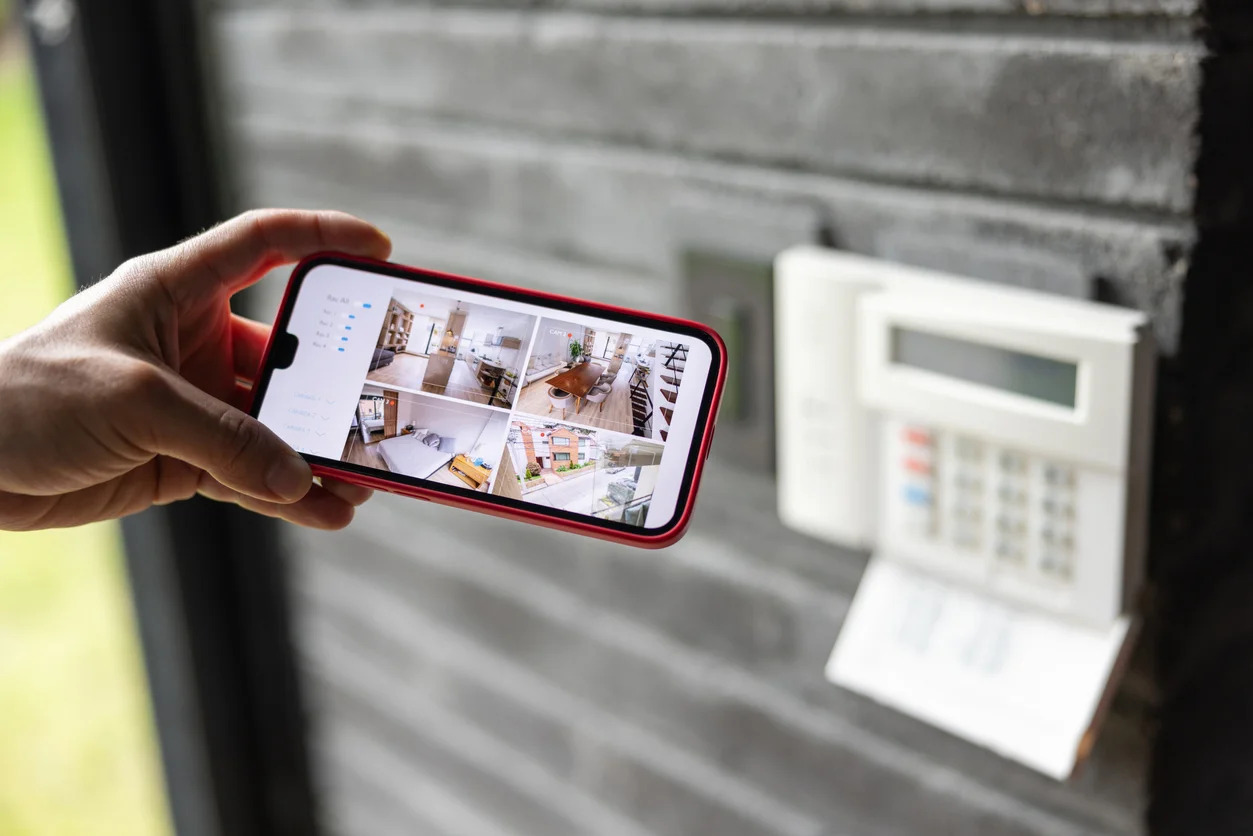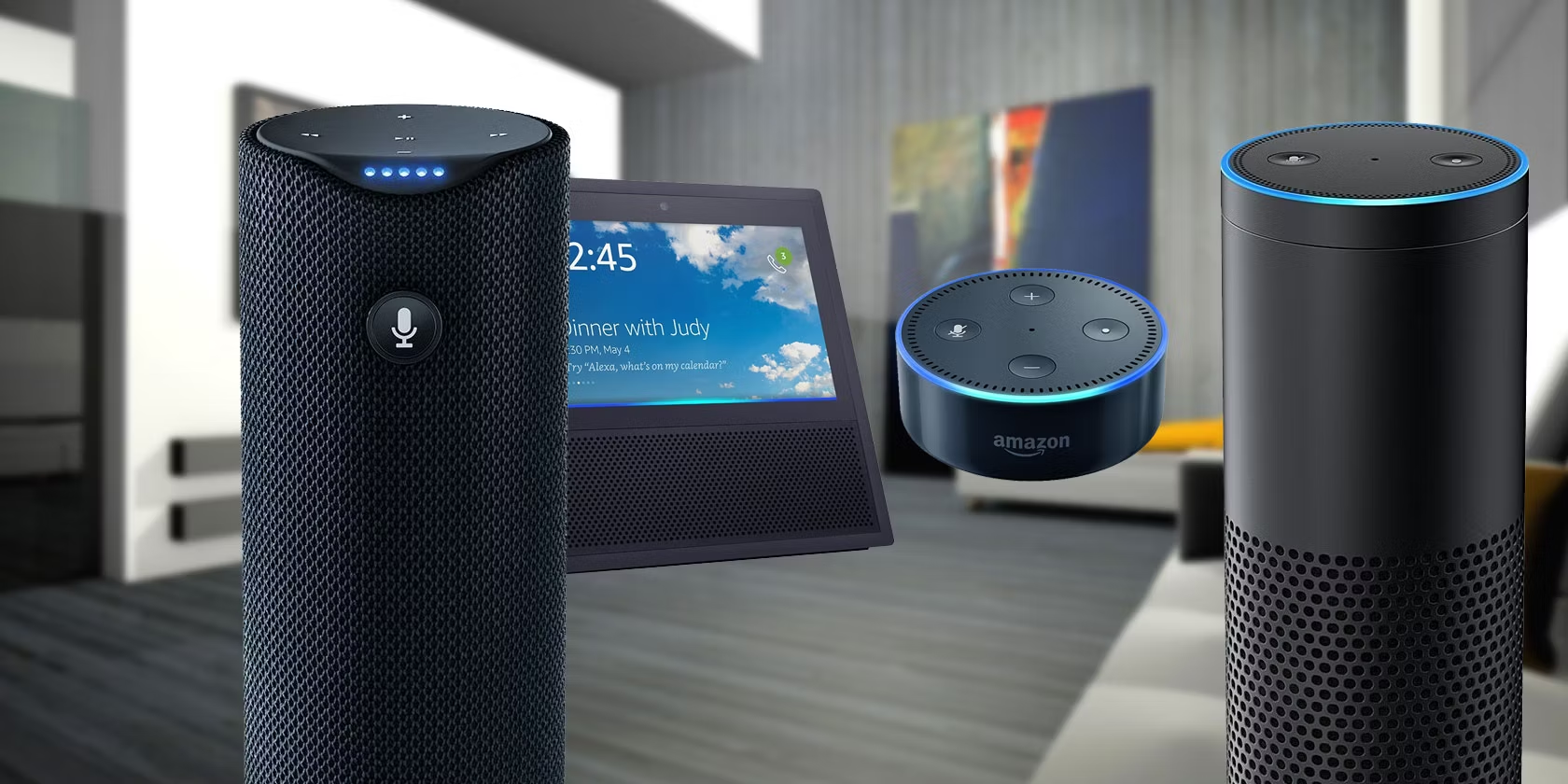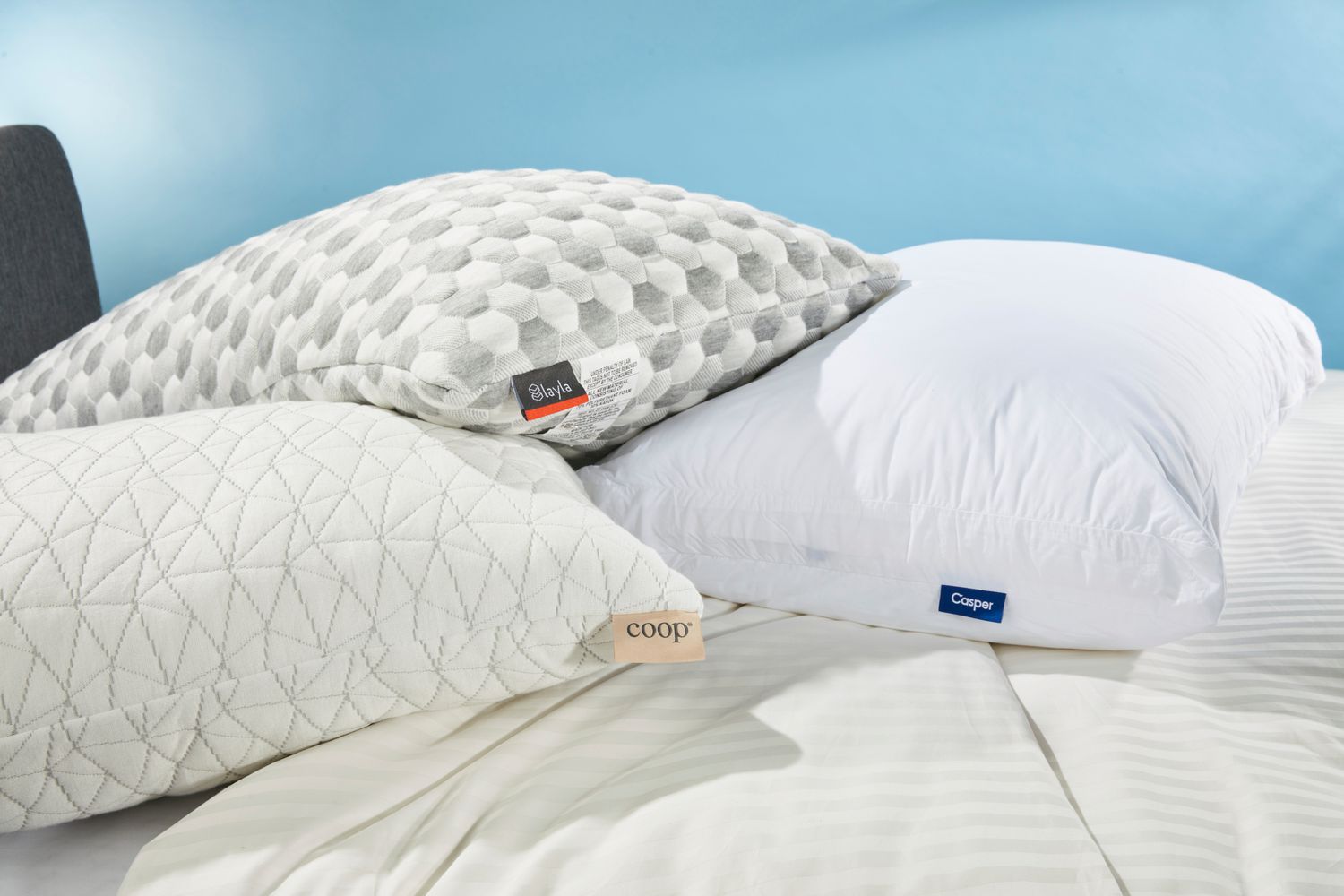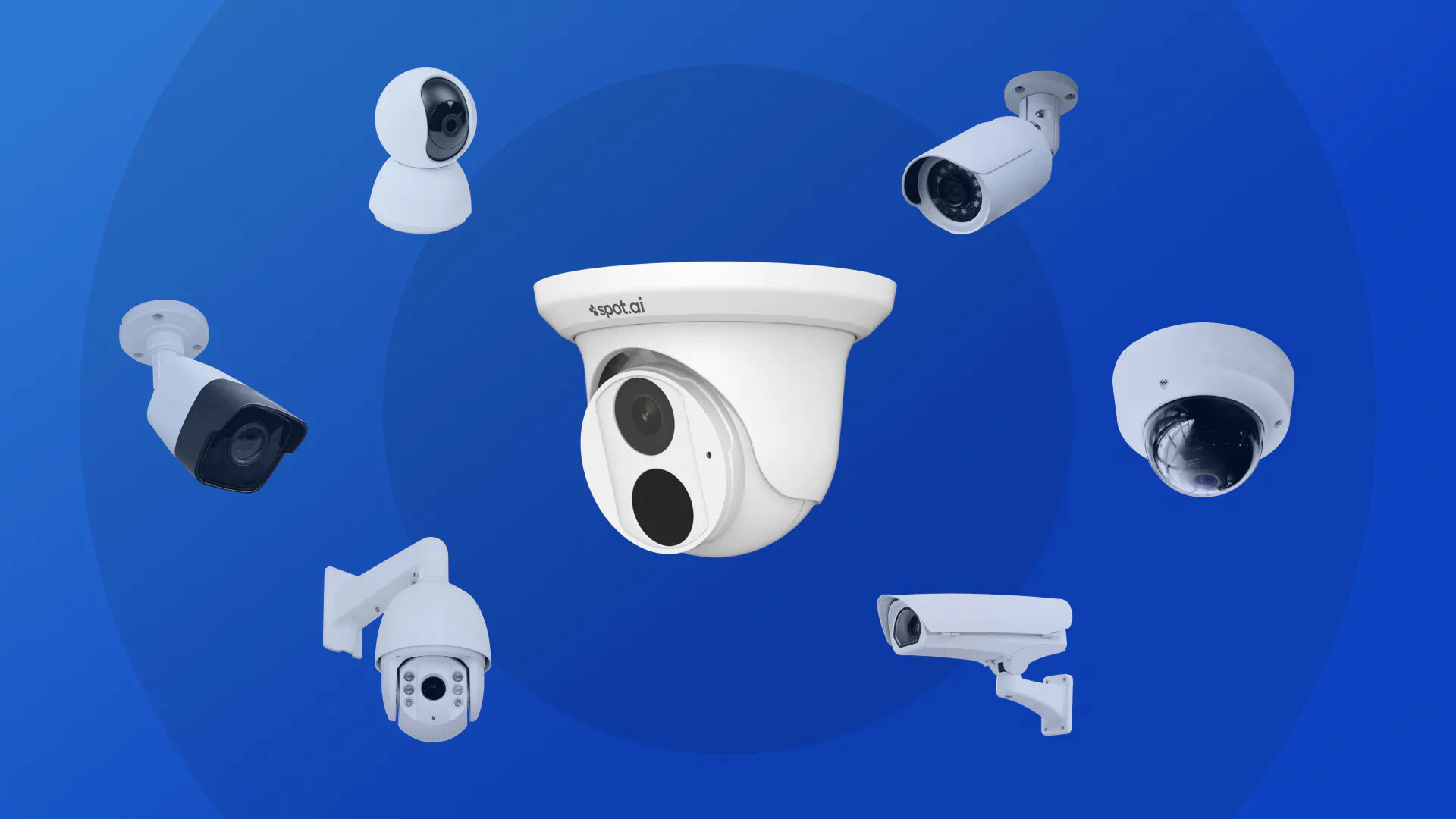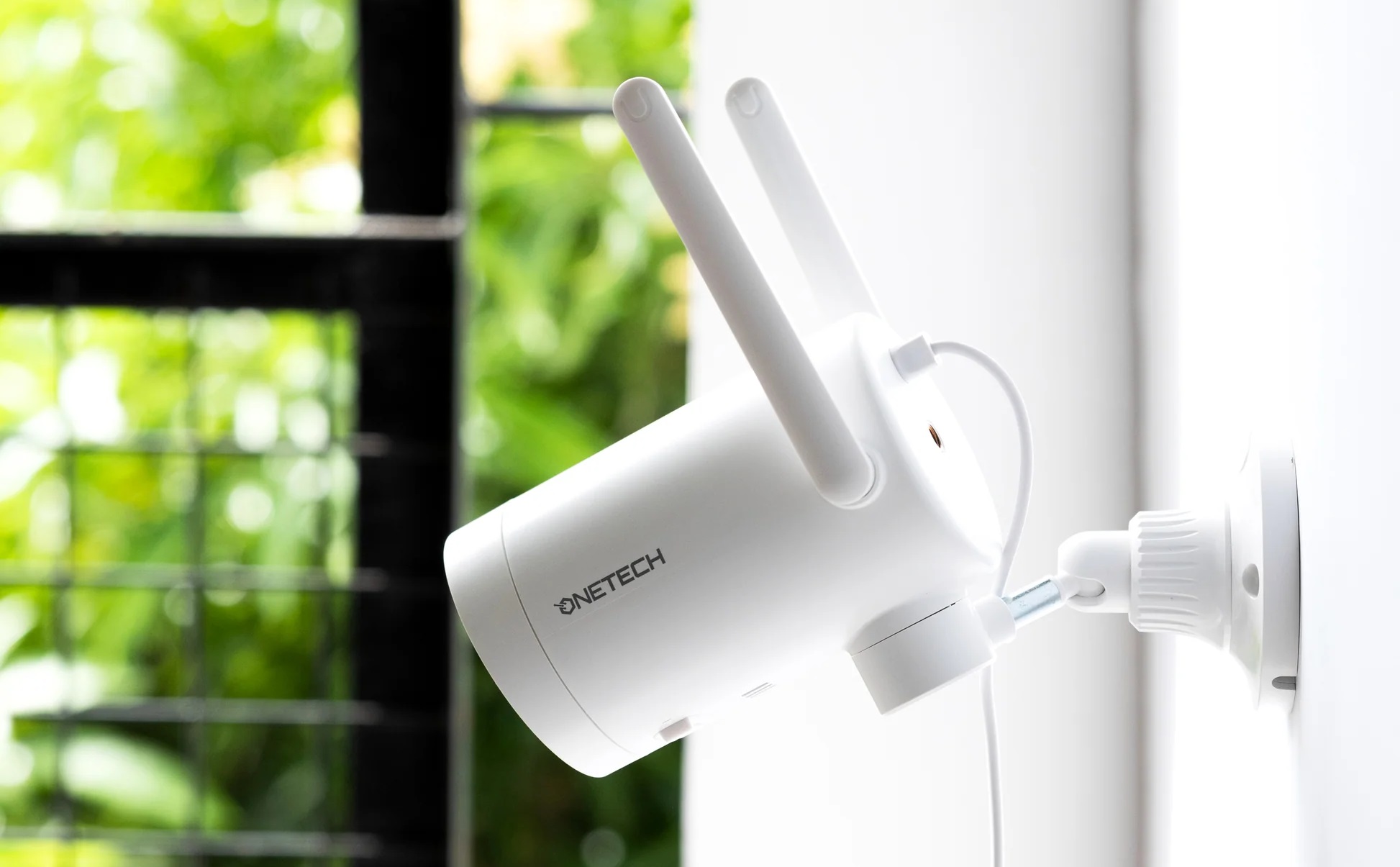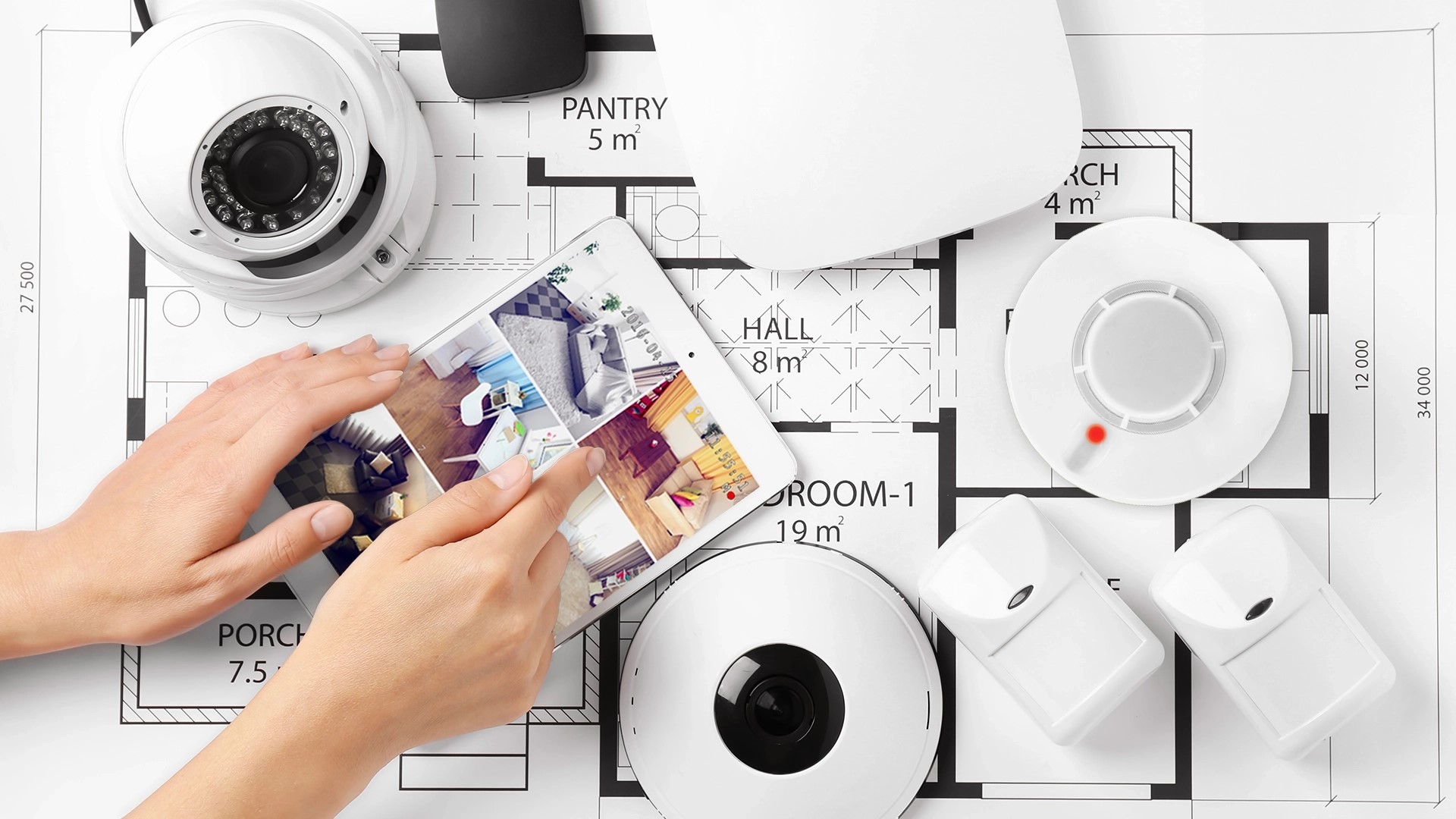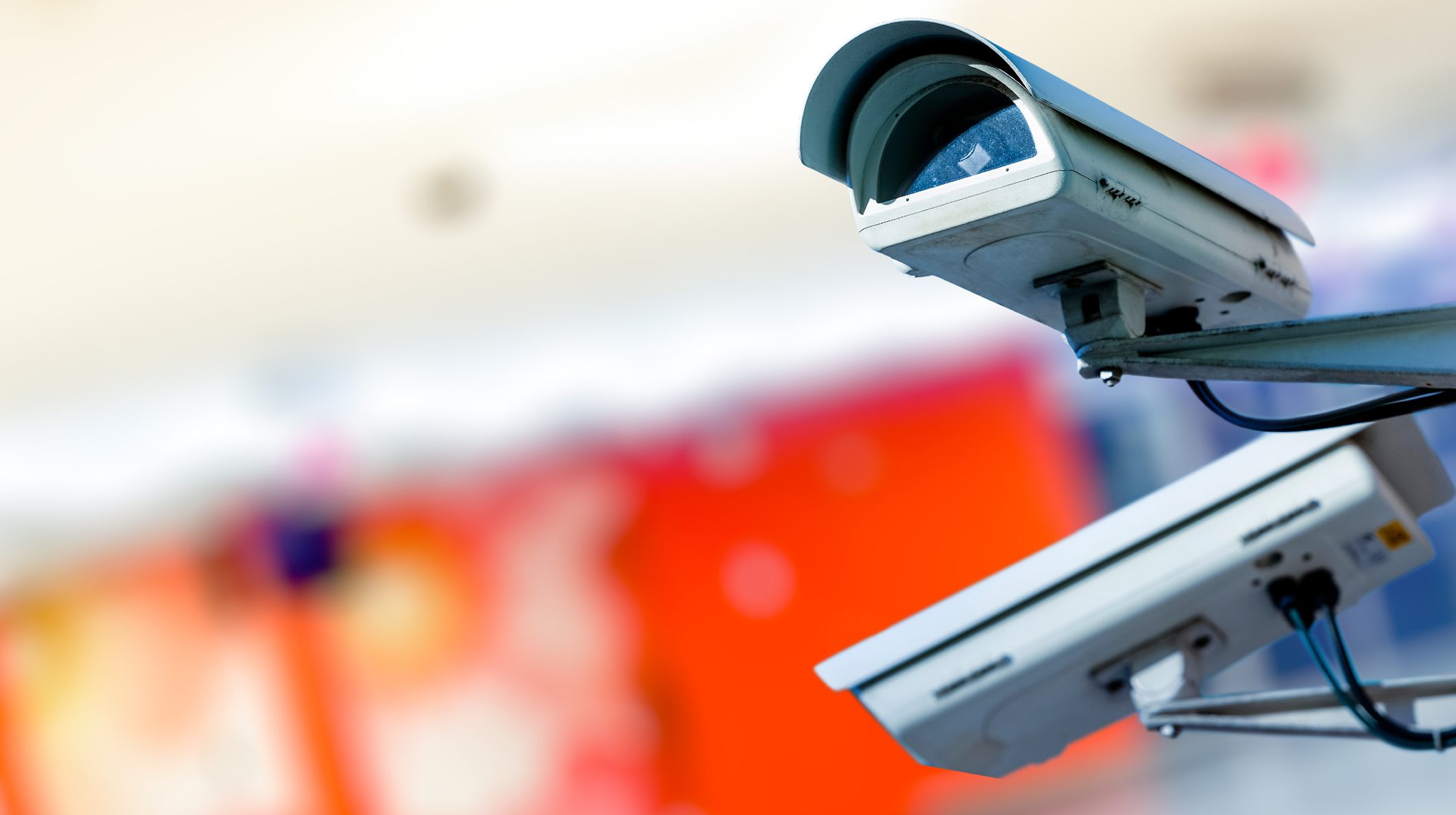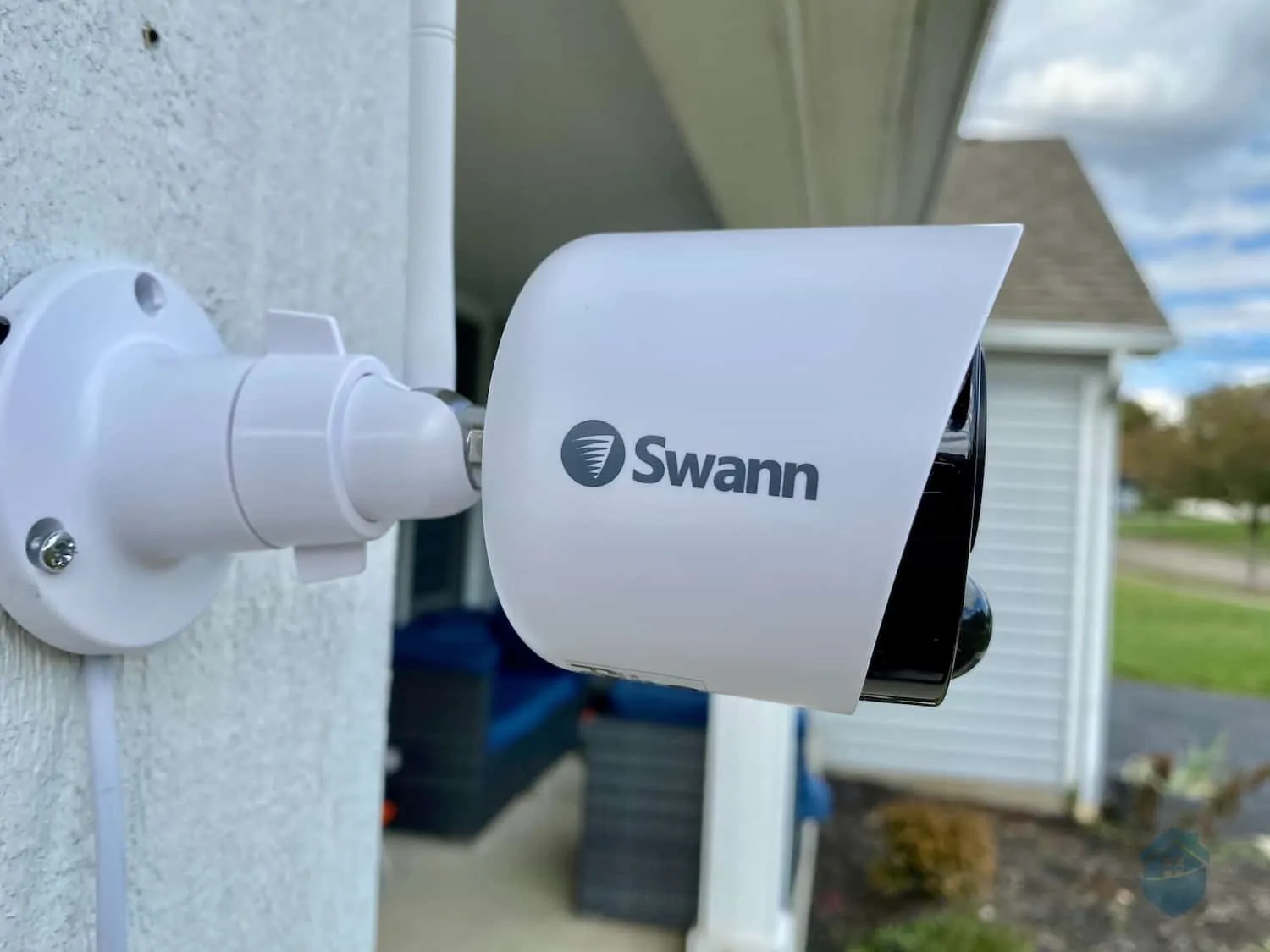Home>Home Security and Surveillance>How Many Types Of Security Cameras Are There
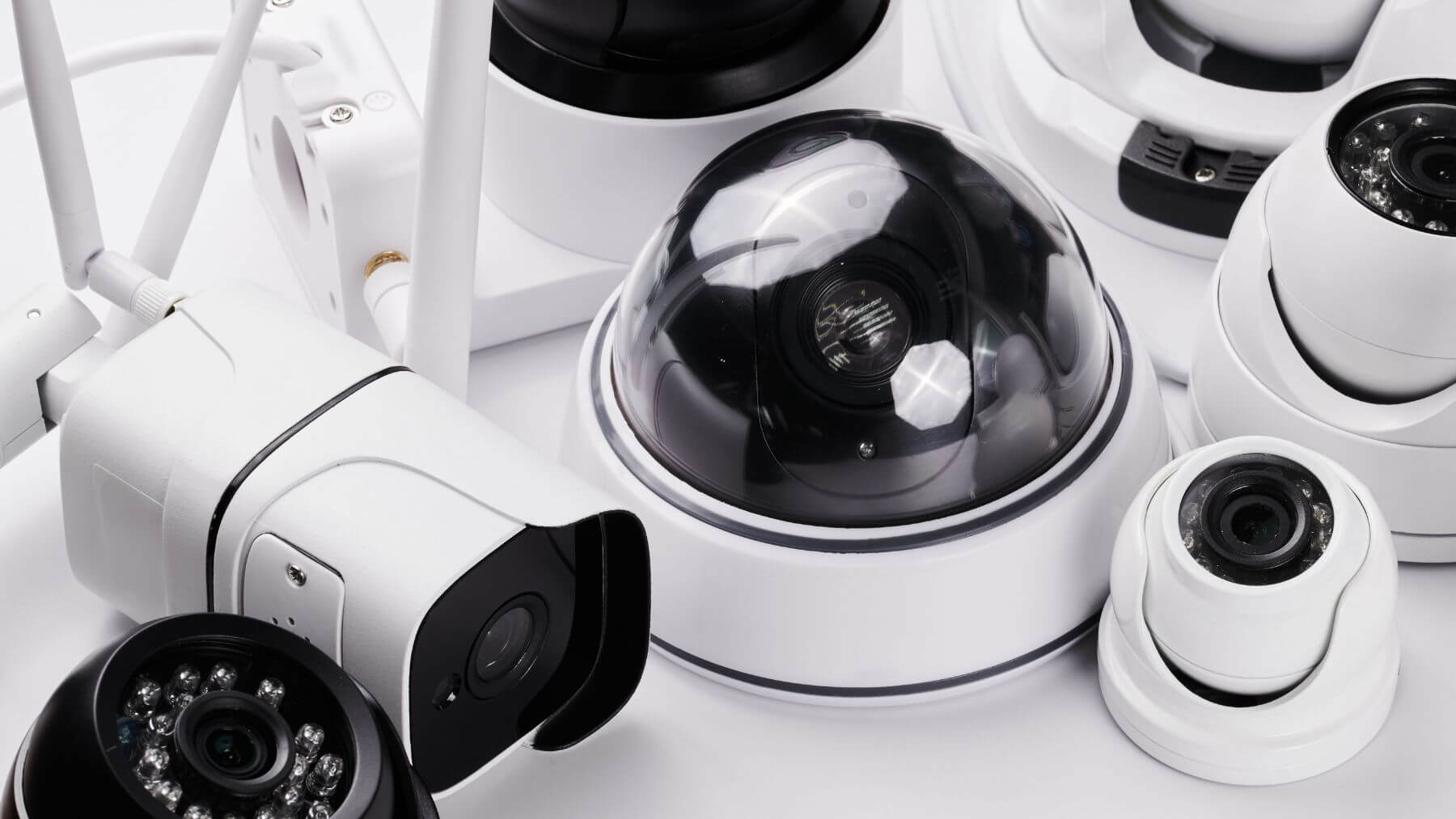

Home Security and Surveillance
How Many Types Of Security Cameras Are There
Modified: March 6, 2024
Discover the various types of security cameras for your home security and surveillance needs. Find the perfect solution to protect your property.
(Many of the links in this article redirect to a specific reviewed product. Your purchase of these products through affiliate links helps to generate commission for Storables.com, at no extra cost. Learn more)
Introduction
Welcome to the world of home security and surveillance! In today’s fast-paced and uncertain world, ensuring the safety and security of our homes has become a topmost priority. Home security cameras play a crucial role in safeguarding our properties and providing us with peace of mind. With advancements in technology, there is a wide array of security camera options available on the market today. In this article, we will explore the different types of security cameras that are commonly used in residential settings.
When it comes to choosing the right security camera for your home, it’s essential to consider factors such as budget, location, and specific security needs. Each type of security camera has its unique features and benefits, making it suitable for different scenarios. Let’s delve into the various types of security cameras available and discover which one might be the perfect fit for you.
Key Takeaways:
- Choose the Right Camera for Your Needs
With options like dome, bullet, PTZ, and thermal cameras, it’s important to consider your specific surveillance needs, such as indoor or outdoor monitoring, to ensure the safety of your home and loved ones. - Prioritize Privacy and Legal Obligations
When using security cameras, it’s crucial to respect privacy, follow legal regulations, and ensure proper installation and maintenance to maximize the effectiveness of your home security system while protecting the privacy of those being monitored.
Dome Cameras
Dome cameras are one of the most commonly used types of security cameras in both residential and commercial settings. As the name suggests, these cameras are housed within a dome-shaped enclosure, which helps to protect them from vandalism and tampering. The dome cover also provides a level of discretion, as it makes it difficult for potential intruders to determine the direction in which the camera is pointed.
Dome cameras come in both indoor and outdoor varieties, making them versatile for various security needs. They are available in both fixed and pan-tilt-zoom (PTZ) options. Fixed dome cameras have a fixed viewing angle and capture footage in a specific direction, making them ideal for monitoring specific areas such as entrances, hallways, and small rooms. PTZ dome cameras, on the other hand, offer the ability to pan, tilt, and zoom in on objects or areas of interest remotely. This flexibility allows for greater coverage and tracking capability, making them suitable for larger areas or outdoor surveillance.
Another advantage of dome cameras is that they are less conspicuous compared to other camera types. The dome cover helps to blend the camera into the surrounding environment, reducing the chance of it being noticed and tampered with. This makes dome cameras an excellent option for both overt and covert surveillance.
Dome cameras can be further classified into infrared dome cameras and vandal-proof dome cameras. Infrared dome cameras are equipped with built-in infrared LEDs, enabling them to capture clear footage even in low-light or complete darkness. These cameras are particularly useful for nighttime surveillance or areas with minimal lighting. Vandal-proof dome cameras, as the name suggests, are designed to withstand harsh conditions and attempts of tampering, making them suitable for high-risk areas or environments.
In summary, dome cameras offer a versatile and discreet solution for home security and surveillance. With their wide range of options, they can be customized to fit specific needs and provide reliable monitoring. Whether you’re looking for a fixed dome camera for indoor monitoring or a PTZ dome camera for outdoor surveillance, this type of camera is an excellent choice for ensuring the safety and security of your home.
Bullet Cameras
Bullet cameras are another popular choice for home security and surveillance. These cameras are named “bullet” due to their sleek and cylindrical shape, resembling a bullet or a lipstick tube. Bullet cameras are typically used in outdoor environments, although they can also be used indoors. They are known for their long-range and focused recording capabilities.
One of the key advantages of bullet cameras is their ability to capture clear images and videos over long distances. They are designed with a fixed focal length lens, allowing for a narrow field of view. This makes them ideal for monitoring specific areas or objects that are located far away, such as driveways, parking lots, or large outdoor spaces.
Many bullet cameras are equipped with infrared (IR) LEDs, enabling them to capture high-quality footage even in low-light conditions or total darkness. This makes them suitable for 24/7 surveillance, ensuring that your property remains protected at all times. Some bullet cameras also feature advanced technologies like wide dynamic range (WDR) and image stabilization, further enhancing the image quality and reducing blurring or distortion.
Similar to dome cameras, bullet cameras can be weatherproof and vandal-resistant, allowing them to withstand harsh outdoor conditions and attempts of tampering. They often come with an IP66 or higher rating, ensuring protection against dust, water, and other external elements. This durability makes bullet cameras a reliable choice for outdoor security purposes.
Installation of bullet cameras is relatively straightforward. They usually come with a mounting bracket, allowing them to be easily attached to walls, ceilings, or other surfaces. Their design also makes it easier to adjust the viewing angle and direction, ensuring optimal coverage of the desired area.
Overall, bullet cameras provide a powerful and focused surveillance solution for outdoor security needs. Their long-range capabilities, IR night vision, and durability make them an excellent choice for monitoring larger outdoor spaces and ensuring the safety of your property. Whether you need to keep an eye on your driveway, backyard, or commercial premises, a bullet camera can provide the reliable monitoring you require.
PTZ Cameras
PTZ cameras, which stands for Pan-Tilt-Zoom cameras, are widely recognized for their versatility and flexibility in surveillance systems. These cameras are equipped with motorized mechanisms that allow them to pan horizontally, tilt vertically, and zoom in on specific objects or areas of interest. The ability to control the camera’s movements remotely makes PTZ cameras highly popular in both residential and commercial settings.
One of the key advantages of PTZ cameras is their extensive coverage. With the ability to pan and tilt, these cameras can effectively monitor larger areas than fixed cameras. This makes them ideal for applications where a wide coverage range is required, such as parking lots, large garden spaces, or commercial premises.
Another notable feature of PTZ cameras is their zoom capability. These cameras come with optical zoom lenses, allowing users to zoom in and out to capture finer details or focus on specific objects. This makes them suitable for scenarios where detailed monitoring is crucial, such as facial recognition, license plate reading, or capturing specific events or incidents.
PTZ cameras can be operated manually or set to automatic mode. In manual mode, users can control and adjust the camera’s movements, zoom, and focus according to their needs and preferences. This gives users full control over what they want to monitor. In automatic mode, PTZ cameras can be programmed to follow a predetermined path or specific areas of interest, providing continuous and dynamic surveillance coverage without human intervention.
Many PTZ cameras also come with advanced features such as motion detection and tracking. These cameras can detect movement within their field of view and automatically track the object or person, ensuring that nothing goes unnoticed. This feature can be especially useful in scenarios where real-time monitoring and immediate action are required.
It’s important to note that while PTZ cameras offer enhanced coverage and flexibility, their installation and setup can be more complex. They require additional cabling for power and control, and the motorized mechanisms may require regular maintenance to ensure smooth operation.
In summary, PTZ cameras are a powerful tool in the realm of home security and surveillance. Their ability to pan, tilt, and zoom provides versatile monitoring capabilities, making them suitable for a range of applications. Whether you need to monitor a large outdoor space, track moving objects, or capture fine details, a PTZ camera can be an excellent choice to enhance your home security system.
Thermal Cameras
Thermal cameras, also known as infrared cameras or thermal imaging cameras, utilize infrared radiation to capture images and videos. Unlike traditional cameras that rely on visible light, thermal cameras detect the heat emitted by objects and create images based on the temperature differences. This unique technology makes them highly valuable in a range of surveillance applications.
One of the primary advantages of thermal cameras is their ability to detect objects and individuals based on their heat signatures, regardless of lighting conditions. This means they are effective even in complete darkness or situations with limited visibility, such as fog, smoke, or camouflage. Thermal cameras excel in scenarios where traditional cameras may fail, ensuring round-the-clock monitoring and detection.
Thermal cameras are particularly useful in perimeter security applications. They can accurately detect and track human or animal movement, helping to identify potential intruders or monitor wildlife activity around your property. This makes them an excellent choice for residential areas with large open spaces, country homes, or properties close to natural reserves.
Another advantage of thermal cameras is their ability to capture images without any ambient light. This makes them useful in situations where maintaining darkness or privacy is necessary, such as bedroom areas or private spaces where traditional cameras may not be suitable. Thermal cameras can provide an extra layer of security without compromising privacy.
Thermal cameras can also be integrated with other security systems, such as alarm systems or access control systems. By combining thermal detection with other security measures, these cameras can provide more comprehensive and accurate surveillance, minimizing false alarms and enhancing overall security effectiveness.
It’s important to note that thermal cameras primarily capture heat signatures rather than detailed images. These cameras create grayscale images where warmer objects appear as brighter shades and cooler objects appear as darker shades. While they may not provide high-resolution color imagery like traditional cameras, they offer invaluable information regarding heat patterns and movement.
In summary, thermal cameras offer a unique and powerful solution for home security and surveillance. With their ability to detect heat signatures and operate in various lighting and environmental conditions, they provide an added layer of protection and monitoring capability. Whether you need to enhance perimeter security, monitor wildlife activity, or maintain privacy, thermal cameras can be an excellent addition to your home security system.
Day/Night Cameras
Day/Night cameras, also known as low light or low lux cameras, are designed to capture clear images and videos in both bright daylight and low-light conditions. These cameras utilize advanced technology to adjust their settings and optimize image quality, ensuring reliable monitoring round the clock.
During the day, Day/Night cameras capture full-color images using natural and artificial light sources. These cameras are equipped with a wide dynamic range (WDR) feature, which helps balance bright and dark areas in the frame, resulting in well-exposed and detailed footage. This makes them suitable for areas with varying light conditions, such as entrances, windows, or outdoor spaces with direct sunlight.
When the light conditions start to dim, Day/Night cameras switch to an infrared mode. They are equipped with infrared (IR) LEDs that emit invisible infrared light, allowing the camera to capture clear black and white images even in complete darkness. This night vision feature enables the cameras to monitor areas with minimal lighting or no external light source at all, providing 24/7 surveillance capability.
Day/Night cameras are popular for both indoor and outdoor applications. In outdoor settings, they can capture clear images of people, vehicles, and other objects during the day and continue to capture detailed footage even in the dark. This makes them ideal for monitoring driveways, gardens, or parking lots where lighting conditions may vary throughout the day.
In indoor settings, Day/Night cameras are particularly useful for areas that are not well-lit or for monitoring spaces during nighttime hours. They can produce clear images without the need for additional lighting, ensuring effective surveillance without disturbing the occupants or compromising privacy.
It’s important to note that while Day/Night cameras provide excellent low-light performance, the image quality may still be affected by the available light conditions. The distance and clarity of night vision will depend on the specific camera model and the intensity of the installed IR LEDs.
In summary, Day/Night cameras offer a versatile solution for home security and surveillance. With their ability to capture high-quality images and videos in both bright daylight and low-light conditions, they provide 24/7 monitoring capability. Whether you need to monitor outdoor areas or dimly lit indoor spaces, Day/Night cameras are a reliable choice for ensuring the safety and security of your home.
Wireless Cameras
Wireless cameras, as the name suggests, are security cameras that operate without the need for physical cables or wires. They use wireless technology, such as Wi-Fi or Bluetooth, to transmit video and audio signals to a central receiver or connected device. Wireless cameras offer several advantages and are becoming increasingly popular in home security systems.
One of the significant benefits of wireless cameras is the ease of installation. Without the need for running cables, the setup process is simplified and less time-consuming. Wireless cameras can be placed virtually anywhere within range of the wireless network, providing flexibility in positioning and coverage. This makes them an excellent choice for both homeowners and renters, as they can be easily moved or relocated as needed.
Wireless cameras are also more discreet compared to wired cameras. They do not require visible cables running along the walls or ceilings, making them less noticeable and enhancing the overall aesthetics of the space. This can be particularly beneficial for homeowners who value a clean and minimalist appearance.
Furthermore, wireless cameras offer remote viewing capabilities. By connecting the cameras to a central receiver or accessing them via a smartphone app or computer, users can monitor their property from anywhere with an internet connection. This allows for real-time monitoring and the ability to check in on your home even when you’re away, providing peace of mind and security.
Wireless cameras come in various types, including indoor and outdoor options. Indoor wireless cameras are ideal for monitoring specific rooms or areas within your home, such as nurseries, living rooms, or entrances. Outdoor wireless cameras are designed to withstand harsh weather conditions and provide surveillance for the exterior of your property, including driveways, gardens, and entrances.
It’s important to note that wireless cameras require a stable and secure Wi-Fi network for optimal performance. Ensure that your home network is adequately protected with strong encryption and passwords to prevent unauthorized access to your camera feeds.
While wireless cameras offer convenience and flexibility, they are dependent on the reliability and range of the wireless network. It’s essential to consider the coverage area of your Wi-Fi network, especially for outdoor installations, to ensure a stable and uninterrupted connection.
In summary, wireless cameras provide a versatile solution for home security and surveillance. With their easy installation, flexibility in placement, and remote viewing capabilities, they offer convenience and peace of mind. Whether you need to monitor your home’s interior or exterior, wireless cameras can help enhance your home security system with minimal hassle and maximum flexibility.
Network/IP Cameras
Network/IP cameras, also known as Internet Protocol cameras, are a type of security camera that can transmit and receive data over a computer network or the internet. These cameras are designed to capture and transmit high-quality digital video and audio signals, providing advanced surveillance capabilities for residential and commercial applications.
One of the notable advantages of network/IP cameras is their high image quality. These cameras offer HD or even 4K resolution options, capturing detailed and sharp footage. The digital nature of the video transmission ensures that there is no loss of image quality during transmission, resulting in clear and accurate monitoring of your property.
Network/IP cameras are equipped with built-in web servers, allowing users to access and control the cameras remotely via a web browser or dedicated software. This remote access feature enables real-time monitoring and the ability to adjust camera settings or view recorded footage from anywhere with an internet connection. Whether you’re at home, the office, or on the go, you have full access and control over your security system.
These cameras also offer advanced features such as motion detection, event-triggered recording, and mobile notifications. The motion detection feature can detect movement within the camera’s field of view, which can trigger recording or send alerts to your mobile device. This allows for immediate action or review of the recorded footage in case of suspicious activity.
Network/IP cameras can be wired or wireless, depending on the system setup and your preference. Wired network cameras require an Ethernet cable connection to the local network, ensuring a reliable and stable connection. Wireless network cameras, on the other hand, use Wi-Fi connectivity to transmit data wirelessly to the network, providing flexibility in camera placement.
Another advantage of network/IP cameras is their scalability. These cameras can be easily integrated into existing network infrastructure, such as routers and switches, allowing for seamless integration and expansion of your security system. Additional cameras can be added as needed, making it a cost-effective solution for both small-scale and large-scale surveillance requirements.
It’s important to ensure that your network/IP cameras are secure to protect your privacy and prevent unauthorized access. Use strong passwords, keep the cameras’ firmware up to date, and consider implementing additional security measures, such as encryption and firewall settings, to safeguard your camera feeds.
In summary, network/IP cameras offer advanced surveillance capabilities with high resolution, remote access, and scalability. These cameras provide the flexibility and convenience of digital video transmission over a network, enabling real-time monitoring and control from anywhere. Whether you need to monitor your home or business, network/IP cameras can significantly enhance your security system with their advanced features and capabilities.
When researching security cameras, consider the different types available such as dome, bullet, PTZ, and wireless cameras. Each type has its own features and benefits, so it’s important to choose the one that best fits your security needs.
Hidden Cameras
Hidden cameras, also known as covert cameras or spy cameras, are designed to be discreet and unobtrusive, blending seamlessly into their surroundings. These cameras are often disguised as common objects or concealed within everyday items, making them ideal for covert surveillance purposes.
One of the key advantages of hidden cameras is their ability to capture footage without drawing attention. These cameras can be disguised as a variety of objects such as clocks, pens, smoke detectors, or even wall outlets. The covert nature of hidden cameras allows for discreet monitoring in areas where traditional cameras may be easily noticed or tampered with.
Hidden cameras provide an added layer of security and surveillance, especially in situations where overt cameras may not be suitable or desirable. For instance, if you want to monitor a nanny or caretaker in your home without their knowledge, a hidden camera can allow you to observe their actions and ensure the safety of your loved ones. Similarly, hidden cameras can be used in office environments to prevent theft or ensure employee compliance without creating a visible surveillance presence.
Hidden cameras come in both wired and wireless versions, depending on the specific needs and preferences. Wired hidden cameras require a physical connection to a recording device or monitor, whereas wireless hidden cameras transmit the footage wirelessly to a receiver or connected device. Wireless hidden cameras offer more flexibility in placement and are easier to install, as they do not require extensive wiring.
It’s essential to note that the use of hidden cameras must comply with legal and ethical considerations. Privacy laws vary by jurisdiction, so it’s crucial to familiarize yourself with the regulations in your area. Hidden cameras should never be used in private spaces such as bathrooms or bedrooms, as this constitutes an invasion of privacy.
When using hidden cameras, proper placement is key. Consider strategic placement to capture the desired area without obstructing the camera’s view. It’s essential to test and adjust the camera’s angle and focus to ensure optimal coverage and image quality.
In summary, hidden cameras offer a discreet and covert solution for surveillance needs. From protecting your home or office to ensuring the safety of your loved ones, hidden cameras provide an additional layer of security without drawing attention. However, it’s essential to use them responsibly and in compliance with legal and ethical guidelines to respect privacy boundaries.
Stick-Up Cameras
Stick-Up cameras, also known as self-contained cameras or standalone cameras, are compact and versatile security cameras that can be easily mounted or placed in various locations. These cameras provide an efficient and flexible solution for monitoring specific areas or spaces within your home or business.
One of the key advantages of stick-up cameras is their ease of installation. These cameras typically come with adhesive mounts or brackets that allow them to be quickly and securely attached to a variety of surfaces, such as walls, ceilings, or furniture. This eliminates the need for complex wiring or professional installation, making them a user-friendly option for both homeowners and renters.
Stick-up cameras are often battery-powered, which further enhances their versatility and convenience. The absence of wires or cables provides the flexibility to place them in locations where power outlets may not be readily available. This makes stick-up cameras an excellent choice for monitoring areas such as entrances, patios, or garages where wiring may be impractical.
Despite their compact size, stick-up cameras offer a range of features and options. Many models include high-definition video resolution, motion detection, two-way audio, and even cloud storage capabilities. These advanced features allow for effective monitoring, recording, and even communication with those on camera. Some stick-up cameras may also offer integration with smart home systems, enabling remote access and control through mobile apps or voice-activated assistants.
Stick-up cameras are designed for both indoor and outdoor use, but it’s important to check the specifications and ensure that the camera is suitable for the intended environment. Outdoor stick-up cameras are typically weather-resistant or even weatherproof, ensuring reliable operation in various conditions. Indoor stick-up cameras, on the other hand, can be discreetly placed in areas such as nurseries, offices, or living rooms for added security and monitoring.
It’s important to note that stick-up cameras may have limited storage capabilities compared to larger security systems. Some models offer local storage options, such as microSD cards, while others may rely on cloud storage services. Consider your recording and storage needs to ensure that the camera chosen meets your requirements.
In summary, stick-up cameras are a convenient and flexible solution for home security and surveillance. With their easy installation, battery-powered operation, and advanced features, they provide an efficient way to monitor specific areas or spaces within your property. Whether you need to keep an eye on your front door, back porch, or a specific room, stick-up cameras offer a compact and versatile option to enhance your security system.
Panoramic Cameras
Panoramic cameras, also known as 360-degree cameras or fisheye cameras, offer a unique and comprehensive surveillance solution. These cameras are designed to capture a wide-angle view, providing a full 360-degree coverage of an area. With their ability to monitor multiple directions simultaneously, panoramic cameras offer enhanced situational awareness and surveillance capabilities.
One of the key advantages of panoramic cameras is their ability to capture a wide field of view without the need for multiple cameras. By utilizing a fisheye lens, panoramic cameras can capture an extended perspective, covering a large area that would typically require multiple cameras to monitor. This reduces installation and maintenance costs and minimizes blind spots, ensuring comprehensive coverage of the desired space.
With their comprehensive view, panoramic cameras are particularly useful in wide-open areas or spaces with high foot traffic, such as shopping malls, airports, or parking lots. These cameras can monitor a large crowd or movement within the area, allowing security personnel to have a complete view of the activities and detect any suspicious behavior in real-time.
While panoramic cameras provide a wide-angle view, it’s important to understand that the resulting video footage may appear distorted due to the fisheye lens. However, modern panoramic cameras often come with dewarping software, which corrects the distortion and provides a more accurate representation of the monitored area. This ensures that objects and individuals are displayed in a more easily recognizable and usable format.
Many panoramic cameras also offer the option of virtual pan-tilt-zoom (PTZ) functionality. This means that users can digitally zoom in and focus on specific areas of interest within the footage, even after it has been captured. This flexibility allows for detailed inspection and analysis of events or incidents without losing the context provided by the panoramic view.
It’s essential to consider the specific requirements and environment when selecting a panoramic camera. Factors such as lighting conditions, resolution, and mounting options should be taken into account to ensure optimal performance and monitoring capabilities.
In summary, panoramic cameras provide an innovative and comprehensive surveillance solution for a wide range of applications. Their ability to capture a 360-degree view reduces the need for multiple cameras and offers enhanced situational awareness. Whether you need to monitor a large open space, crowded area, or high-traffic location, panoramic cameras can provide the continuous monitoring and detailed analysis required for effective security and surveillance.
License Plate Recognition Cameras
License Plate Recognition (LPR) cameras, also known as Automatic Number Plate Recognition (ANPR) cameras, are specialized security cameras designed to capture and process license plate numbers. These cameras utilize advanced optical character recognition technology to identify and record license plate information, providing valuable data for various law enforcement and security applications.
One of the key advantages of LPR cameras is their ability to accurately capture and read license plates in various lighting conditions and angles. These cameras are equipped with high-resolution sensors and specialized lenses to capture clear and detailed images of license plates, even in low-light or nighttime conditions.
LPR cameras are commonly used in traffic enforcement and toll collection systems. They can accurately identify vehicles that violate traffic regulations, such as speeding or running red lights, by automatically reading and verifying license plate numbers. This provides law enforcement agencies with a powerful tool for monitoring and enforcing traffic laws.
Another common application of LPR cameras is in parking management systems. These cameras can automatically detect and record license plate numbers as vehicles enter or exit a parking area. This allows for efficient monitoring of parking spaces, ticketing, and control over unauthorized access.
LPR cameras are also utilized in security systems for access control and perimeter management. By integrating LPR cameras with access control systems, entry and exit points can be monitored, and authorized vehicles can be granted or denied access based on their license plate information. This enhances security measures and helps track vehicle movement within a restricted area.
The data collected by LPR cameras can be stored locally or transmitted to a central database for further analysis and integration with other security systems. Advanced LPR systems may include additional features such as facial recognition capabilities, enabling more comprehensive identification and tracking of vehicles and individuals.
It’s worth noting that the use of LPR cameras raises privacy concerns, as license plate data is sensitive and personal information. Proper data protection measures and compliance with privacy regulations should be ensured when implementing LPR systems.
In summary, License Plate Recognition cameras are sophisticated tools used to capture and analyze license plate information for a variety of applications. They offer accurate and efficient identification of vehicles in different lighting and environmental conditions, providing valuable data for traffic enforcement, parking management, access control, and perimeter security. When implemented responsibly and with proper privacy measures in place, LPR cameras can significantly enhance security measures and contribute to the overall safety of an area or facility.
Baby Monitor Cameras
Baby monitor cameras, also known as nanny cameras or baby surveillance cameras, offer parents and caregivers a convenient way to keep an eye on their little ones from a distance. These cameras provide real-time video and audio monitoring, ensuring the safety and well-being of infants and young children, even when parents are not in the same room.
One of the primary advantages of baby monitor cameras is their ability to provide visual and audio reassurance to parents. These cameras allow parents to visually check on their baby’s sleep patterns, movements, and behavior, providing peace of mind. The real-time audio monitoring feature enables parents to listen for any signs of distress or discomfort, ensuring that they can promptly attend to their child’s needs.
Baby monitor cameras come in various types, including standalone cameras and smartphone or tablet-based devices. Standalone cameras are designed specifically for baby monitoring, offering features such as night vision, temperature monitoring, and two-way audio communication. Smartphone-based apps, along with compatible cameras, provide parents with the ability to monitor their baby’s activities using their mobile devices, no matter where they may be.
Some baby monitor cameras offer additional features such as motion detection and sound activation. When enabled, these features can alert parents if their baby starts moving or crying, ensuring that they are promptly notified of any unusual activity. This can be particularly useful for parents who may be in another room or away from home.
Security and privacy are essential considerations when using baby monitor cameras. It’s crucial to ensure that the camera’s connection is secure and encrypted to prevent unauthorized access to the video stream. Additionally, parents should consider the placement of the camera to maintain privacy within the nursery or child’s sleeping area.
Baby monitor cameras also provide convenience for parents who need to remotely monitor their child’s activities. This is especially useful for working parents who may have a caregiver or nanny taking care of their child during the day. The ability to check in on their baby from the office or during travel allows parents to stay connected and involved in their child’s daily routine.
In summary, baby monitor cameras offer parents a convenient and reassuring way to monitor their baby’s activities and well-being. From real-time video and audio monitoring to motion detection and smartphone integration, these cameras enhance the safety and peace of mind for parents, ensuring that they can stay connected and attentive to their baby’s needs, even when they are not physically present.
Read more: How Many Types Of Blinds Are There
Outdoor Cameras
Outdoor cameras play a vital role in home security systems, providing surveillance and monitoring for the exterior of your property. These cameras are specifically designed to withstand harsh weather conditions, vandalism attempts, and provide reliable coverage of outdoor spaces.
One of the primary advantages of outdoor cameras is their ability to monitor and deter potential intruders. The presence of cameras visible on the exterior of your property acts as a deterrent, discouraging individuals from attempting to commit crimes. Outdoor cameras provide a proactive approach to security, ensuring that you can keep a watchful eye on your property and act quickly in case of any suspicious activity.
Outdoor cameras are weatherproof and built to withstand various environmental conditions. They are designed to resist rain, snow, heat, and other extreme weather elements to ensure uninterrupted operation. Whether it’s monitoring your front yard, backyard, or the perimeter of your property, outdoor cameras are equipped to handle the toughest outdoor environments.
Many outdoor cameras are equipped with night vision capabilities, allowing for clear monitoring even in low-light or total darkness. Infrared (IR) LEDs enable the camera to capture precise and detailed footage, making them an effective solution for 24/7 surveillance. This ensures that your property remains protected round the clock, eliminating blind spots where potential threats could exploit the darkness.
Outdoor cameras come in various forms, including dome cameras, bullet cameras, and even PTZ cameras. Dome cameras are popular for outdoor use as they are visually discreet and often vandal-resistant. Bullet cameras offer a long-range focus and are suitable for monitoring specific areas or long driveways. PTZ cameras provide the ability to pan, tilt, and zoom, offering flexible coverage of larger outdoor areas.
For additional security, some outdoor cameras may offer advanced features such as motion detection and remote monitoring. Motion detection can trigger alerts when movement is detected in the camera’s field of view, allowing for immediate attention and response. Remote monitoring features enable homeowners to access camera feeds from anywhere using smartphones or other connected devices, ensuring real-time monitoring and control.
When installing outdoor cameras, it’s important to consider the placement and angles to maximize coverage and minimize blind spots. Strategic positioning around entry points, driveways, and patios can enhance security measures and provide comprehensive surveillance.
In summary, outdoor cameras are an essential component of a robust home security system. With their weatherproof construction, night vision capabilities, and visual deterrence, outdoor cameras provide round-the-clock surveillance and peace of mind. By monitoring the exterior of your property, outdoor cameras help protect against intruders and provide vital evidence in the event of any security incidents.
Indoor Cameras
Indoor cameras are an integral part of home security systems, providing surveillance and monitoring for the interior spaces of your home. These cameras offer a range of benefits, from monitoring specific rooms to ensuring the safety of your loved ones and valuables.
One of the primary advantages of indoor cameras is their ability to monitor and record activities within your home. Whether you want to keep an eye on your living room, kitchen, nursery, or other areas, indoor cameras provide a visual feed that allows you to observe the activities and behaviors of those inside.
Indoor cameras are available in various types and designs to suit different needs. Dome cameras are a popular choice for indoor use as they are discreet and blend well with the surroundings. They offer a wide field of view and can monitor large areas effectively. Another option is cube cameras, which are compact and can be easily placed on shelves or countertops. These cameras are ideal for monitoring specific locations or points of interest within a room.
Indoor cameras often come equipped with features such as two-way audio communication, enabling you to interact with those in the room. This can be particularly useful in a nursery, where you can soothe or communicate with your baby from another part of the house. It also allows you to remotely communicate with family members or pets when you’re away from home.
Some indoor cameras offer motion and sound detection capabilities. When activated, these cameras can send notifications or alerts to your smartphone or other connected devices when motion or sound is detected in the monitored area. This provides an extra layer of security, allowing you to be promptly notified of any unexpected activities or potential threats.
Privacy is an essential consideration when using indoor cameras. It’s crucial to ensure that the camera is placed in locations that respect the privacy of those inside the home. Private areas such as bedrooms and bathrooms should be off-limits for camera monitoring.
Remote monitoring and access to indoor cameras are often available via smartphone apps or web portals. This allows you to check the live feed, review recorded footage, and adjust camera settings from anywhere, providing peace of mind and the ability to monitor your home even when you’re away.
In summary, indoor cameras provide a crucial layer of security and peace of mind by monitoring the interior spaces of your home. Whether you want to ensure the safety of your loved ones, keep an eye on valuable possessions, or remotely communicate with those inside, indoor cameras offer flexible surveillance solutions. With features such as two-way audio, motion detection, and remote access, indoor cameras contribute to creating a secure and connected home environment.
Conclusion
Home security and surveillance have become increasingly important in today’s world, and choosing the right type of camera is crucial to ensure the safety of your property and loved ones. In this article, we have explored a variety of camera options commonly used in residential settings.
Dome cameras offer versatility and discreet monitoring, making them an excellent choice for both indoor and outdoor surveillance. Bullet cameras provide long-range coverage and durability, making them ideal for monitoring specific areas or large outdoor spaces. PTZ cameras offer flexibility with their pan, tilt, and zoom capabilities, allowing for comprehensive monitoring of larger areas. Thermal cameras utilize infrared technology to capture clear images in low-light or nighttime conditions, making them a valuable tool for 24/7 surveillance. Day/Night cameras excel in capturing clear footage in both bright daylight and low-light conditions and are particularly useful for outdoor applications.
Wireless cameras provide convenience and flexibility with their easy installation and remote viewing capabilities. Network/IP cameras offer high-resolution images, remote access, and scalability for both small-scale and large-scale surveillance requirements. Hidden cameras offer discreet monitoring and can be disguised as common objects or concealed within everyday items. Stick-Up cameras provide a compact and versatile solution for monitoring specific areas or spaces within your home. Panoramic cameras provide a comprehensive view of an area, reducing the need for multiple cameras and enhancing situational awareness.
License Plate Recognition cameras accurately capture and record license plate information, offering valuable data for traffic enforcement and access control systems. Baby monitor cameras provide an extra level of reassurance for parents, allowing them to monitor their baby’s activities and well-being remotely. Outdoor cameras provide robust surveillance for the exterior of your property, with weatherproof construction and night vision capabilities. Indoor cameras offer visual monitoring of the interior spaces, allowing you to keep an eye on specific rooms or points of interest within your home.
Each type of camera discussed in this article has its unique features and benefits, allowing you to tailor your security system to meet your specific needs. Whether it’s ensuring the safety of your home, monitoring for potential intruders, or keeping an eye on your loved ones, the right camera choice is essential.
Remember to consider factors such as the location, weather conditions, visibility, and additional features when selecting the ideal camera for your surveillance needs. Prioritize privacy, follow legal obligations, and ensure proper installation and maintenance to maximize the effectiveness of your home security system.
By investing in the right security cameras and incorporating them into a comprehensive security strategy, you can significantly enhance the safety and security of your home, providing you with peace of mind and reassurance.
Frequently Asked Questions about How Many Types Of Security Cameras Are There
Was this page helpful?
At Storables.com, we guarantee accurate and reliable information. Our content, validated by Expert Board Contributors, is crafted following stringent Editorial Policies. We're committed to providing you with well-researched, expert-backed insights for all your informational needs.
